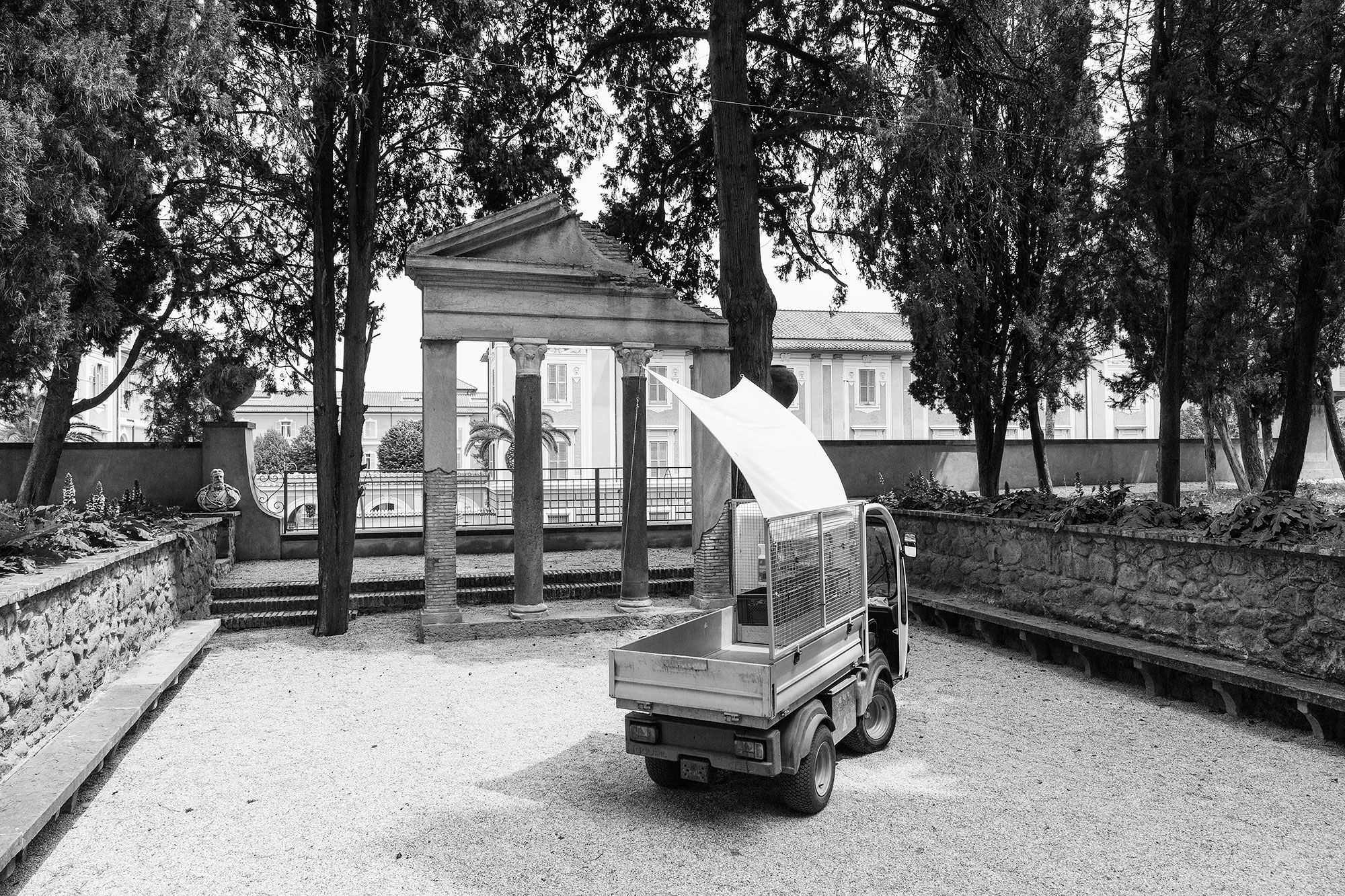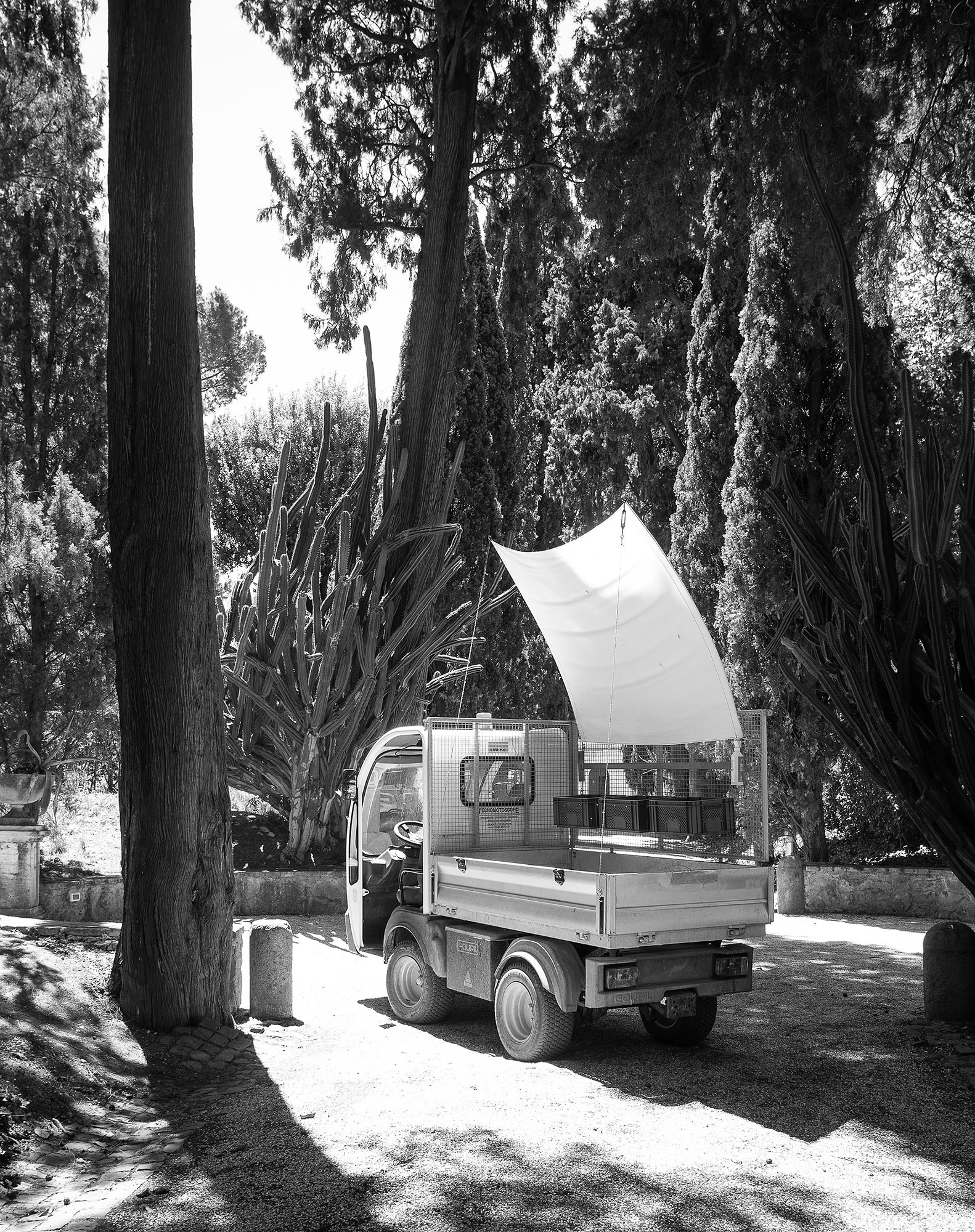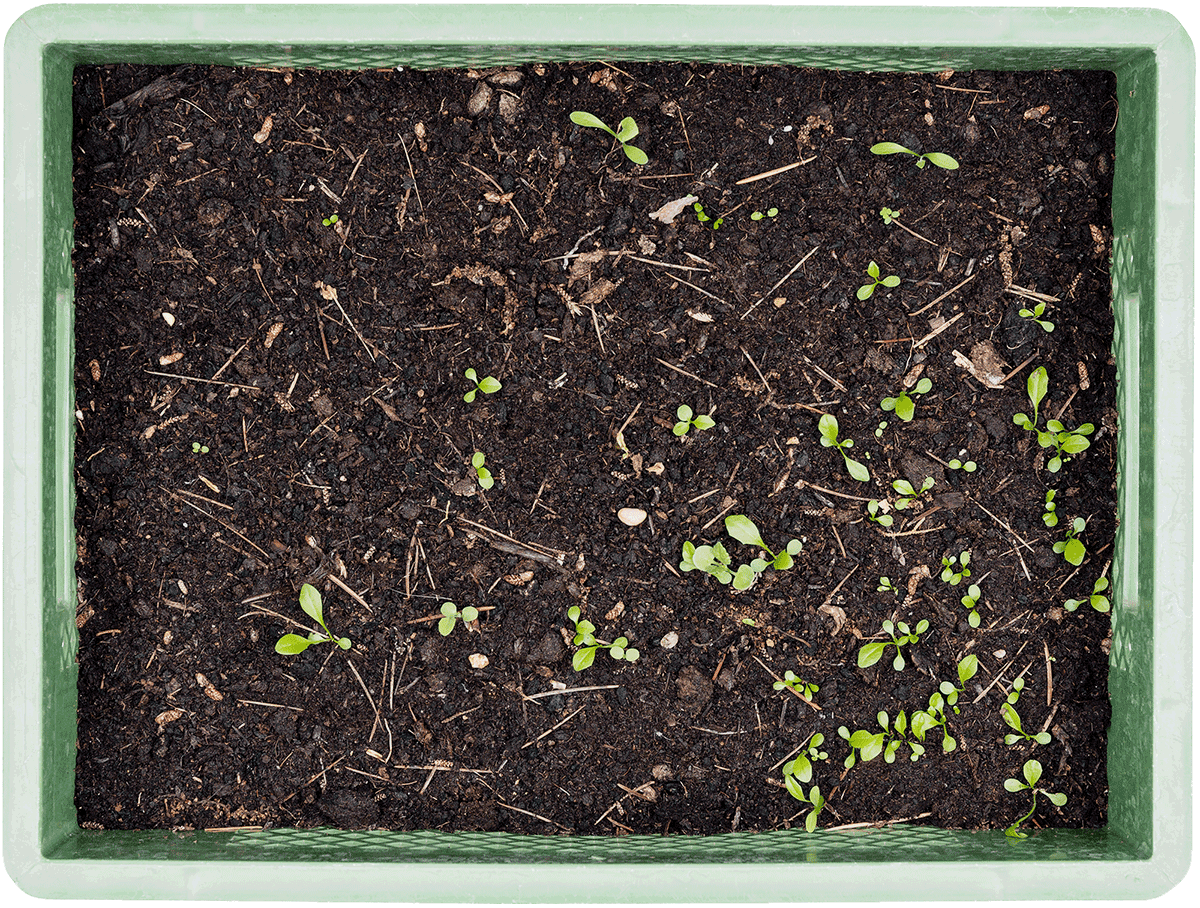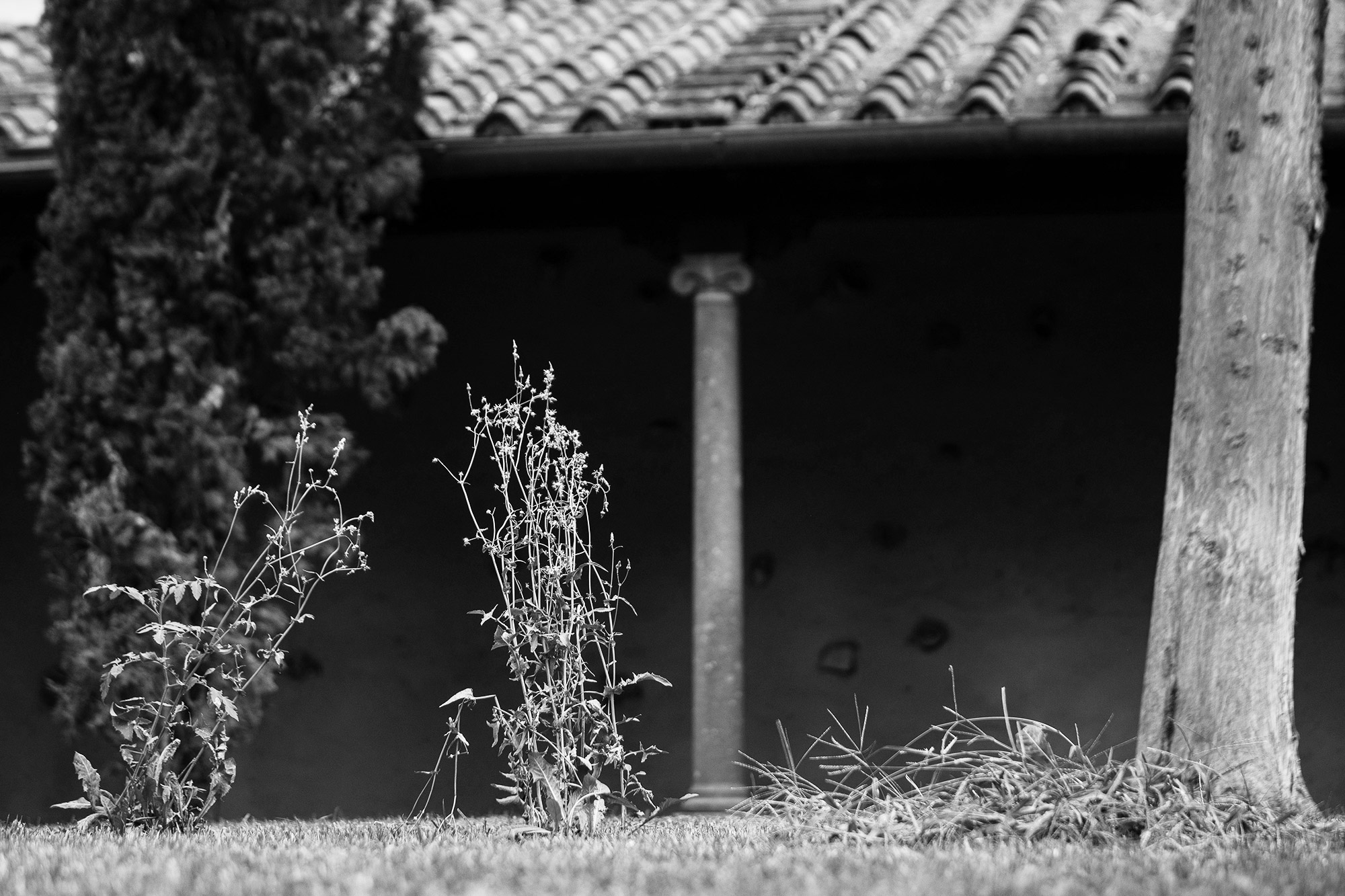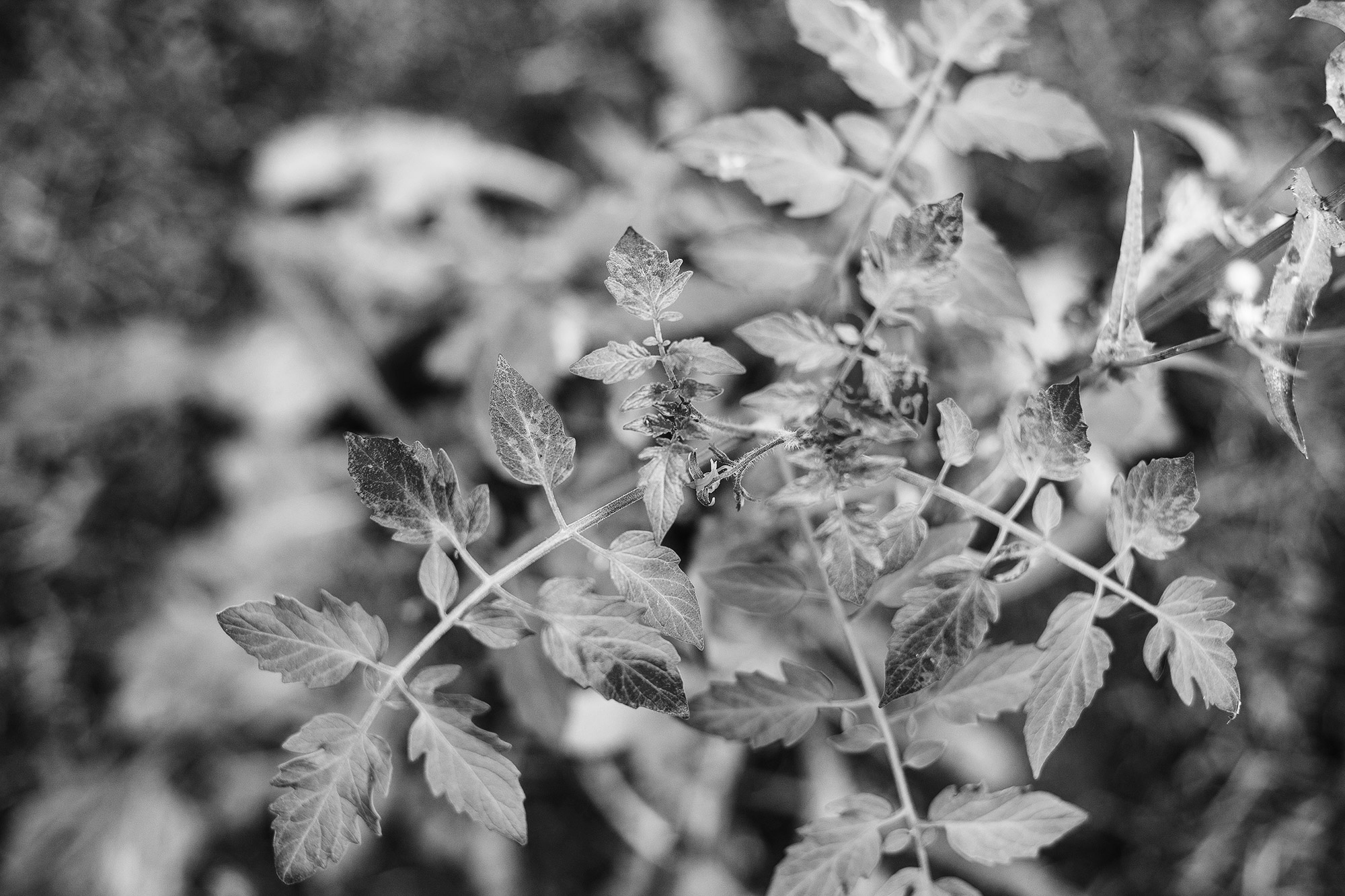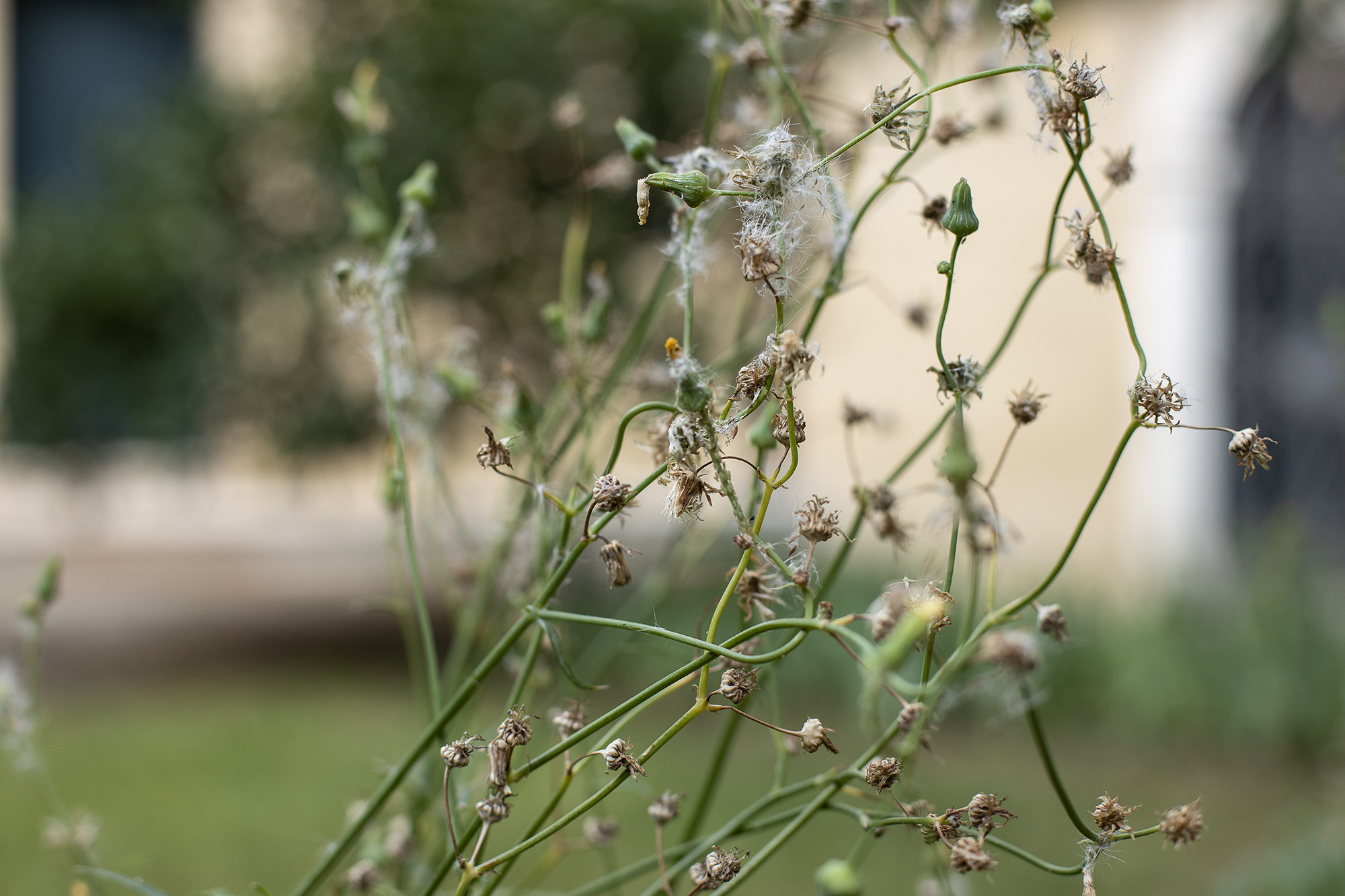The Restricted Garden
2020, Mar–
– Villa Massimo, Rome
Intervention / sculpture in the garden of the Villa Massimo, Rome
The idyllic park of the German Academy Rome Villa Massimo is enclosed by an impressive wall, which only a little while ago was still topped by barbed wire. Access is allowed to Rome Prize Fellows and guests; to open the large iron gate one has to ring a bell and to patiently await the answer of the secretary. Villa Massimo is a restricted garden, indeed.
The artistic duo FAMED for some years already is interested in biodynamic gardening – in its praxis as well as in the connected socio-ecological theories, which not only draw relations between the world of plants and human society but also deal with a larger concept of interconnectedness. Shortly after their arrival in Rome, FAMED started experimenting with planting autochthon seeds they imported from their German home in Leipzig to see which effect the Italian soil and climate would have on these floral migrants. In the beginning of March 2020, due to the fast spreading new Corona Virus and the decision of the Italian government to impose a nationwide curfew, what always had seemed to be a restricted garden turned into a kind of golden cage. The artist duo FAMED, which had grown up in the GDR, refused to accept the idea of an impermeable separation. Sticking strictly to governmental sanctions, they did not leave the park of Villa Massimo except for doing the groceries, but with the help of tools and instruments they found on the premises, they built a device to proof that their no such thing like isolation. They mounted three movable earth patches on the electric vehicle of Villa Massimo’s gardeners and equipped it with a huge sail, in order to catch the wind and, most of all, to capture the seeds that cross the walls traveling with the breeze. For six weeks, the vehicle, a movable restricted garden within the restricted garden, was moved each day to different spot along the walls, following the wind of the day.
After the end of the lockdown, when Villa Massimo’s gardeners were again allowed in and reclaimed their vehicle, the artists unmounted the three flower beds to observe which kind of intruders have taken root and will grow. In conclusion the plants from the three mobile patches were planted into the park of Villa Massimo so as to become a part of the surroundings.
The Restricted Garden still is a work in process with obvious traits of institutional (if not even in a larger sense social) critique. It cannot be read without a reference to the art history of the hortus conclusus, the cloister garden with flowers, fruits and often a fertile well surrounded by unsurmountable walls. The garden of the monastery, protecting not only the nuns but indeed Virgin Mary herself, is charged symbolically with the ideas of pureness and immaculacy. FAMED’s subversive act of fertilizing the restricted garden is questioning the broader concept of virginity, not of the female gender but of communities, which can only survive by being permeable.
Julia Draganović
Photos: Alberto Novelli, FAMED (2,4,5,6)
Der idyllische Park der Deutschen Akademie Rom Villa Massimo ist von einer eindrucksvollen Mauer umgeben, die noch vor kurzem mit Stacheldraht überzogen war. Zutritt haben nur Rom-Preisträger*innen und Gäste; um das große Eisentor zu öffnen, muss man eine Glocke läuten und geduldig die Antwort des Sekretariats abwarten. Die Villa Massimo ist in der Tat ein geschützter Garten.
Das Künstlerduo FAMED interessiert sich bereits seit einigen Jahren für den biodynamischen Gartenbau – sowohl für dessen Praxis als auch für die damit verbundenen sozio-ökologischen Theorien, die nicht nur Beziehungen zwischen der Pflanzenwelt und der menschlichen Gesellschaft aufzeigen, sondern sich darüber hinaus mit einem umfassenden Konzept der Verflechtung auseinandersetzen. Kurz nach ihrer Ankunft in Rom begannen FAMED mit der Aussaat autochthoner Samen zu experimentieren, die sie aus ihrer deutschen Heimat Leipzig importiert hatten, um herauszufinden, welche Auswirkungen der italienische Boden und das Klima auf diese Blumenmigranten haben würden. Anfang März 2020 verwandelte sich aufgrund des sich schnell ausbreitenden neuen Corona-Virus und der Entscheidung der italienischen Regierung, eine landesweite Ausgangssperre zu verhängen, das, was schon immer ein umzäunter Garten gewesen zu sein schien, in eine Art goldenen Käfig. Das in der DDR aufgewachsene Künstlerduo weigerte sich, die Idee einer undurchdringlichen Trennung zu akzeptieren. Obwohl sie unter strikter Einhaltung der staatlichen Sanktionen den Park der Villa Massimo nicht verließen, es sei denn zum Einkaufen von Lebensmitteln, konstruierten sie mit Hilfe von Arbeitsgeräten und Gegenständen, die sie auf dem Gelände fanden, eine Vorrichtung, die beweisen sollte, dass es so etwas wie Isolation nicht gibt. Sie montierten drei bewegliche, mit Erde versehene Behälter auf das Elektrofahrzeug der Gärtner der Villa Massimo und statteten dieses mit einem mächtigen Segel aus, um den Wind und vor allem die Samen einzufangen, die mit der Brise über die Mauern ziehen. Sechs Wochen lang wurde das Fahrzeug, ein beweglicher eingeschränkter Garten innerhalb des eingeschränkten Gartens, dem Wind folgend jeden Tag an eine an dere Stelle entlang der Mauern positioniert.
Nach dem Ende der Ausgangssperre, als die Gärtner der Villa Massimo wieder eingelassen wurden und ihr Fahrzeug zurückforderten, demontierten die Künstler die drei Beete, um zu beobachten, welche Art von Eindringlingen Wurzeln geschlagen hatten und wachsen würden. Schließlich wurde der Inhalt der Beete in den Park der Villa Massimo eingesetzt, um in diesem aufzugehen.
The Restricted Garden ist ein sich noch immer im Prozess befindendes Werk mit offensichtlichen Zügen institutioneller (wenn nicht sogar im weitesten Sinne sozialer) Kritik. Es kann nicht ohne einen Hinweis auf die Kunstgeschichte des Hortus conclusus gelesen werden, eines von unüberwindbaren Mauern umgebenen Klostergartens mit Blumen, Früchten und oftmals auch einem ergiebigen Brunnen. Der Garten des Klosters, der nicht nur die Nonnen, sondern auch die Jungfrau Maria selbst schützt, ist symbolisch aufgeladen mit den Ideen von Reinheit und Unberührtheit. FAMEDs subversiver Akt einer Befruchtung des beschränkten Gartens hinterfragt explizit das Prinzip der Jungfräulichkeit, nicht des weiblichen Geschlechts, sondern der Gemeinschaften, die nur überleben können, wenn sie durchlässig sind.
Julia Draganović
Photos: Alberto Novelli, FAMED (2,4,5,6)

